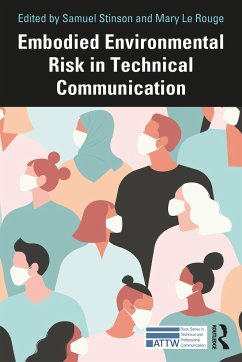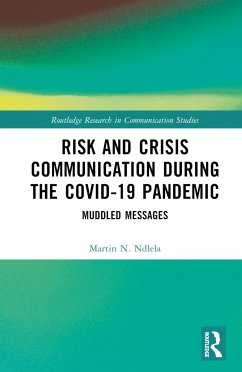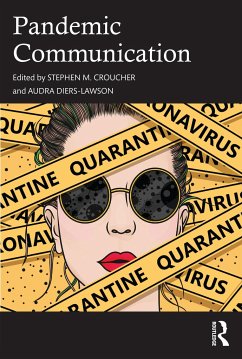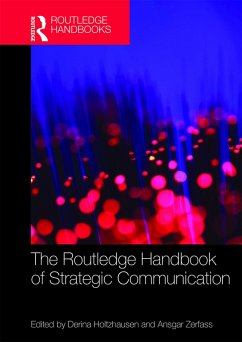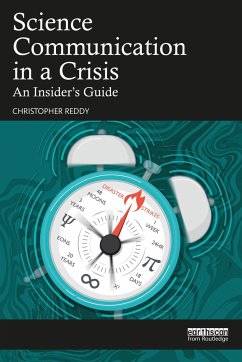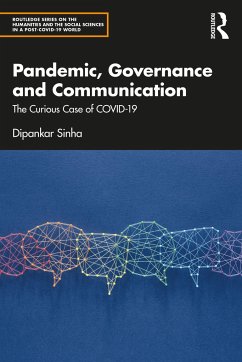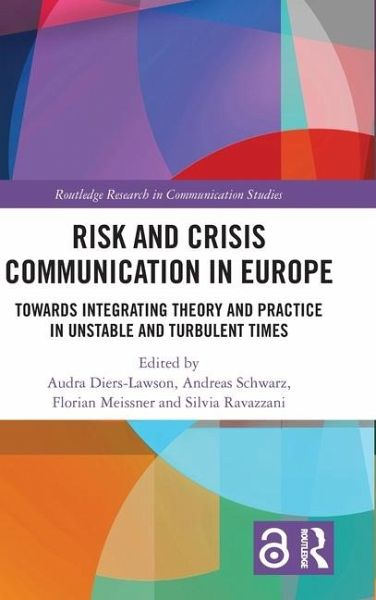
Risk and Crisis Communication in Europe
Towards Integrating Theory and Practice in Unstable and Turbulent Times
Herausgegeben: Diers-Lawson, Audra; Schwarz, Andreas; Meißner, Florian; Ravazzani, Silvia
Versandkostenfrei!
Versandfertig in 6-10 Tagen
154,99 €
inkl. MwSt.
Weitere Ausgaben:

PAYBACK Punkte
77 °P sammeln!
This timely volume offers an international and cross-disciplinary examination of risk and crisis communication theory and practice in Europe.Placing the rapidly developing field of risk and crisis communication within the context of a Europe in flux - experiencing the amplification of the refugee crisis, Brexit, increasing terrorist attacks, a heightened awareness of the climate crisis, and the COVID-19 pandemic - a cross-continental team of experts explore these developments from a theoretical and practical standpoint. Drawing connections between culture, digital technology, identity, public ...
This timely volume offers an international and cross-disciplinary examination of risk and crisis communication theory and practice in Europe.
Placing the rapidly developing field of risk and crisis communication within the context of a Europe in flux - experiencing the amplification of the refugee crisis, Brexit, increasing terrorist attacks, a heightened awareness of the climate crisis, and the COVID-19 pandemic - a cross-continental team of experts explore these developments from a theoretical and practical standpoint. Drawing connections between culture, digital technology, identity, public health, politics, and industry, the analysis offers a multitude of perspectives from across the continent and provides ways ahead for the field of risk and crisis communication.
This exciting and innovative volume will interest scholars and students of risk and crisis communication, media studies, political communication, public relations, political studies, and international relations.
Chapter 5 of this book is freely available as a downloadable Open Access PDF at http://www.taylorfrancis.com under a Creative Commons [Attribution-Non Commercial-No Derivatives (CC-BY-NC-ND)] 4.0 license
Placing the rapidly developing field of risk and crisis communication within the context of a Europe in flux - experiencing the amplification of the refugee crisis, Brexit, increasing terrorist attacks, a heightened awareness of the climate crisis, and the COVID-19 pandemic - a cross-continental team of experts explore these developments from a theoretical and practical standpoint. Drawing connections between culture, digital technology, identity, public health, politics, and industry, the analysis offers a multitude of perspectives from across the continent and provides ways ahead for the field of risk and crisis communication.
This exciting and innovative volume will interest scholars and students of risk and crisis communication, media studies, political communication, public relations, political studies, and international relations.
Chapter 5 of this book is freely available as a downloadable Open Access PDF at http://www.taylorfrancis.com under a Creative Commons [Attribution-Non Commercial-No Derivatives (CC-BY-NC-ND)] 4.0 license





